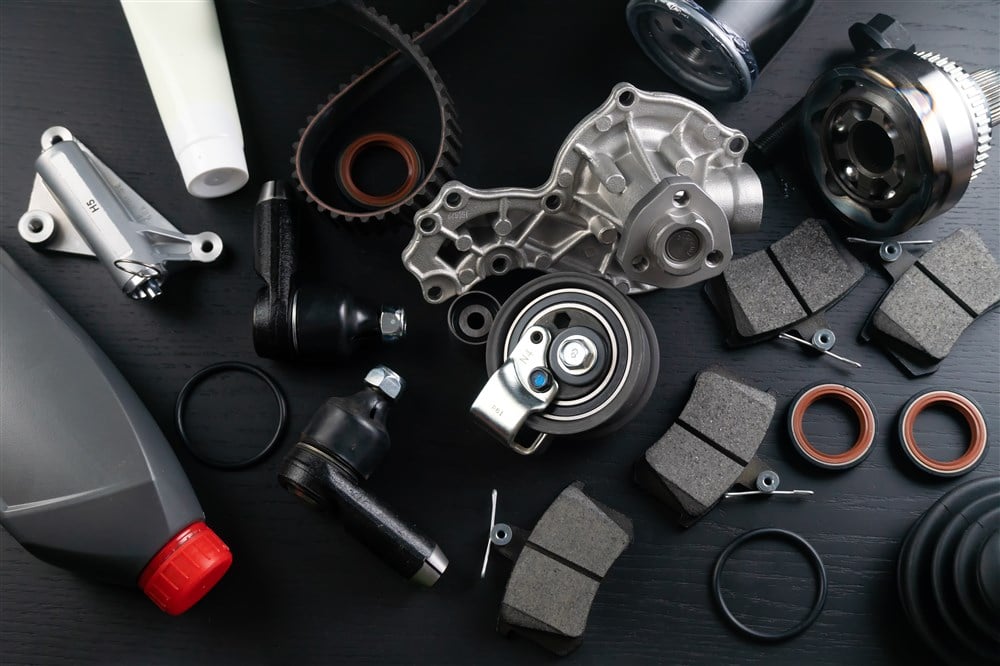
Tesla has more than doubled this year. Meanwhile, Ford and General Motors are barely in the green. This wide disparity in stock performances isn't unique to auto manufacturers. Year-to-date returns on auto parts retailers are all also over the road.
Typically, stocks that belong to the same industry group move in the same general direction. This is because they have exposure to the same macroeconomic and business-specific trends. As such, their financial results are usually similar — but this hasn't been the case for the auto parts chains.
Yes, the group is dealing with the same economic dynamics. Inflation is lowering disposable income, leaving consumers less money to spend on car parts and repairs. While some continue to view auto maintenance as essential spending, others are putting it off in the face of higher gas and food prices. Fortunately, the tank's only half empty for auto parts retailers. They are also benefiting from a pair of powerful tailwinds.
First, new car prices are near record highs while used car prices are falling rapidly. This incentivizes car buyers to opt for a used set of wheels, which naturally require more replacement parts and repairs. Second, the average age of vehicles on the road hit an all-time high of 12.5 years this summer. With Americans stretching 'old faithful' to the max rather than taking on a high-interest new car loan, it's an advantage for auto parts retailers.
So there are a mix of factors that are hitting the brakes and stepping on the gas for U.S. auto parts shops. Some are maximizing the positives and minimizing the negatives better than others. Along with some company-specific issues, this is why we are seeing such a divergence in their 2023 stock movements.
ORLY: +10% YTD
O'Reilly Automotive, Inc. (NASDAQ: ORLY) is outpacing auto parts peers in 2023 mainly because its profits are accelerating. The retailer topped Wall Street estimates in both Q1 and Q2 in delivering 15% and 16% earnings per share (EPS) growth respectively. After opening 42 new stores last quarter, it is on track to open as many as 190 locations this year. The key distinction is that it is focused on the most profitable geographies. Since there are varying degrees of demand and profitability across the U.S., expanding wisely is proving to be a winning strategy.
At the same time, stores are being effectively integrated into O'Reilly's e-commerce channel through services like curbside pickup. The company is also looking outside the U.S. for growth after acquiring Mexico-based Mayasa Auto Parts, its first international buyout. This has it in the driver's seat to post a 31st straight year of record revenue — and its stock price heading to $1,000.
AAP: -59% YTD
Advance Auto Parts, Inc. (NYSE: AAP) is having another rough year. Now down 75% from its January 2022 peak, the stock got crushed after management lowered its 2023 profit outlook and slashed its dividend by more than 80%. The company's major misstep was reducing prices in an attempt to win over consumers at the expense of competitors. It is a sound strategy in theory but has only led to anemic sales growth and weaker profits. Advance Auto Parts has failed to hitch a ride on the aging vehicle tailwind because costs are rising, and DIY and DIFM customers are finding better deals elsewhere. The company has become a poster child for lack of execution, which has resulted in a leadership overhaul. New CEO Shane O'Kelly faces easier comps in 2024 but will need to orchestrate a major realignment to straighten things out.
AZO: +3% YTD
After big gains in 2021 and 2022, AutoZone, Inc. (NYSE: AZO) is tapping the brakes this year and potentially consolidating for the next leg up. There's no reason to believe the retailer won't continue to trend higher. It has topped Street earnings estimates for 12 consecutive quarters and is seizing the opportunity to cater to used car owners.
Going forward, its most compelling growth opportunity is the commercial side of the business. Management is positioning the company to grab a bigger piece of the commercial market by building 'mega-hub' outlets offering a broader selection of aftermarket parts for delivery vans, trailers and commercial fleets — including those going electric. This is a big part of why analyst price targets started hitting $3,000 last week.
GPC: -14% YTD
Genuine Parts Company (NYSE: GPC) is struggling to win over investors this year after its stock hit an all-time high in December 2022 and the valuation became stretched. The NAPA auto parts distributor beat EPS expectations in Q1 and Q2 to extend its streak to 13 quarters. Earlier this year, management raised the dividend to stretch that streak to 68 years. And yet, the dividend aristocrat continues to trend lower.
Part of the problem is that Genuine Parts is grappling with cost inflation more than competitors. Supply chain disruptions continue to be an overhang. Increased labor and commodity costs are also weighing on margins. Taking on $1 billion to acquire Kaman Distribution Group last year has also added to expenses and created leverage that has turned off some shareholders.
Slowing sales and profit growth are proving to be a tough sell, even with the impressive EPS and dividend streaks. At some point, GPC will get too cheap. But with the stock still commanding a premium valuation, buyers aren't yet willing to come along for the recovery ride.